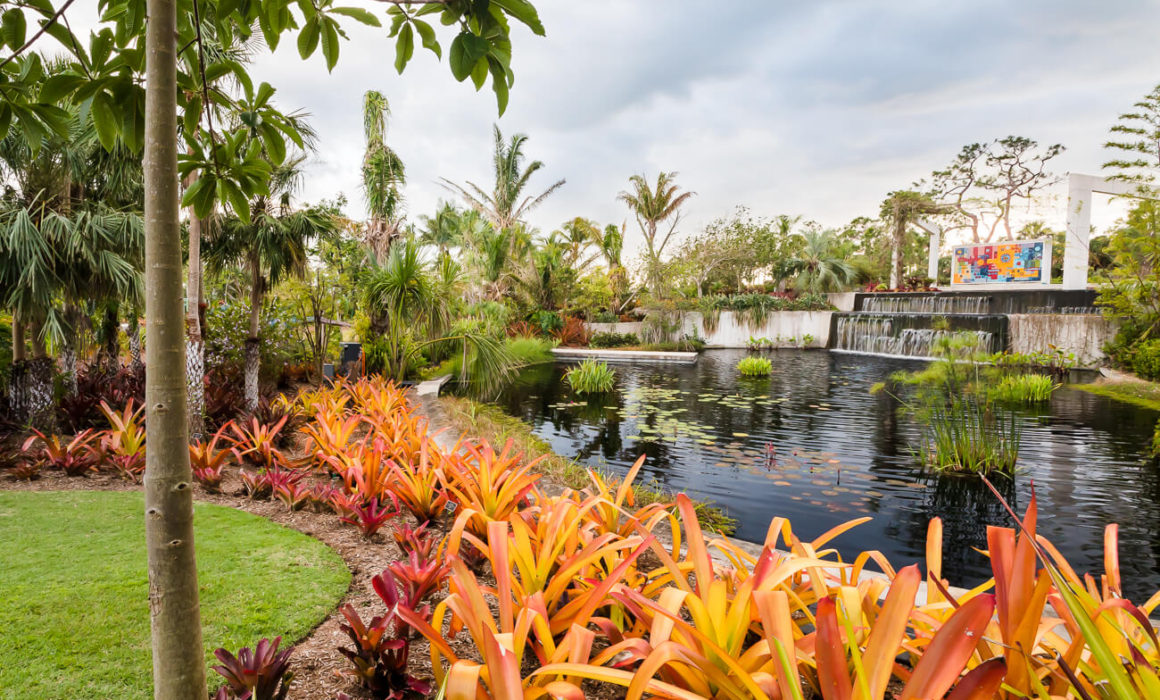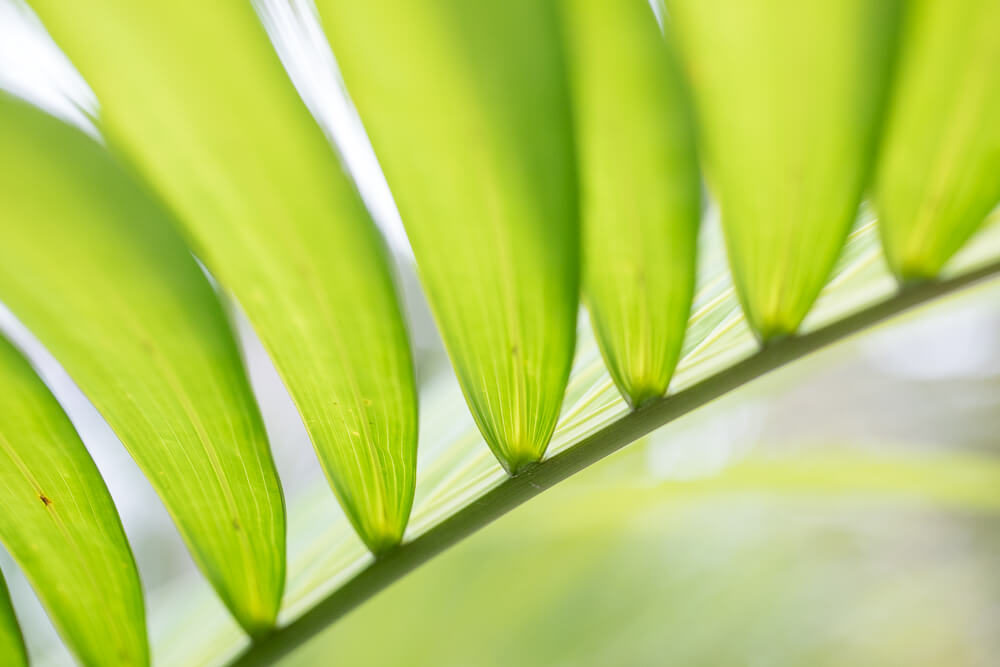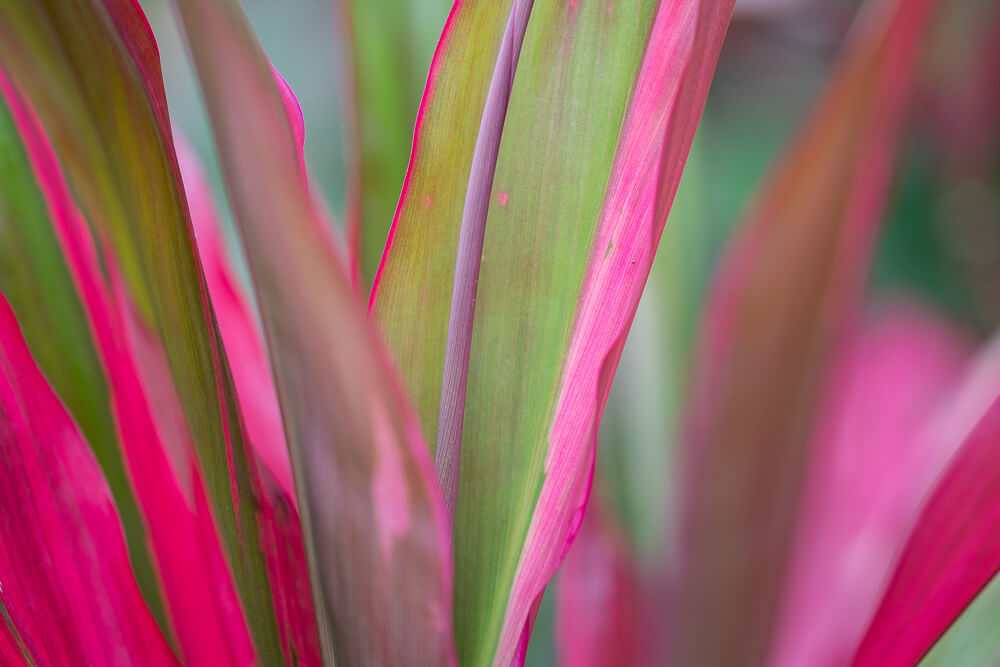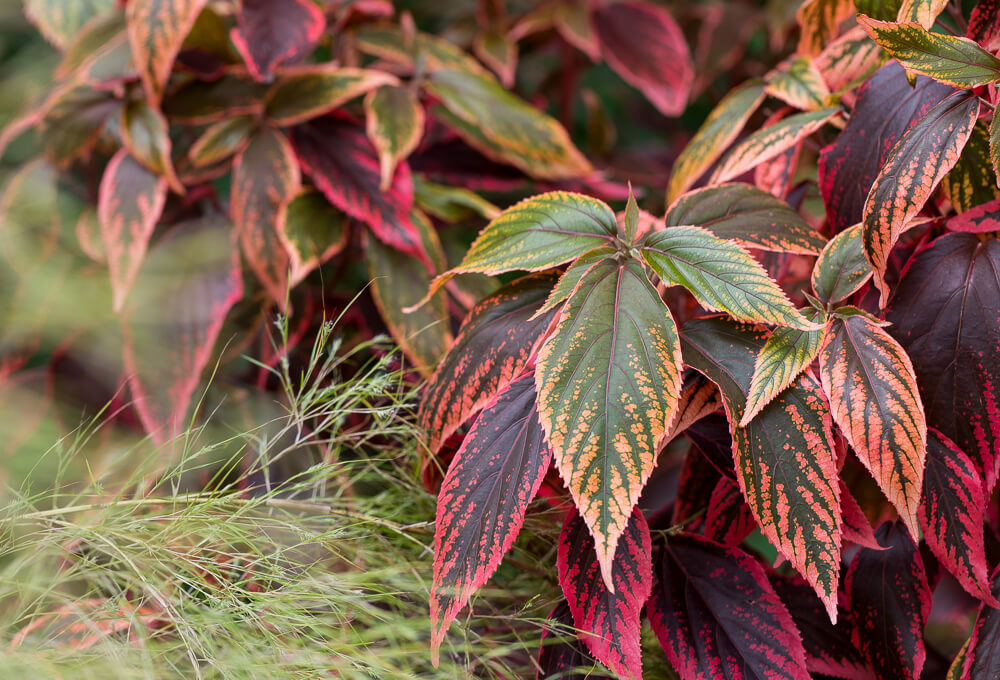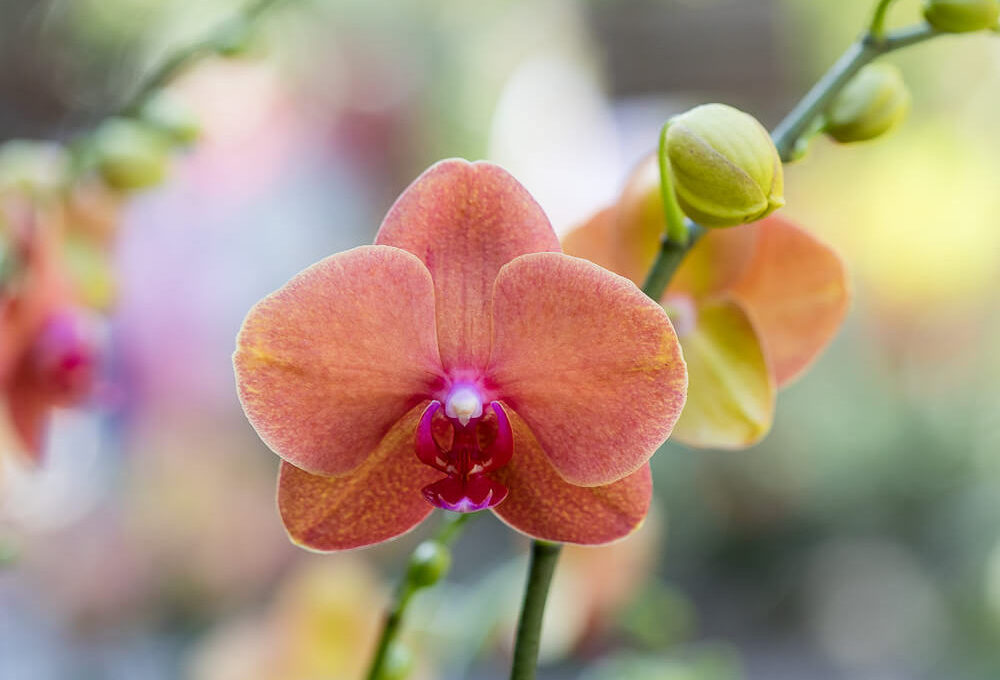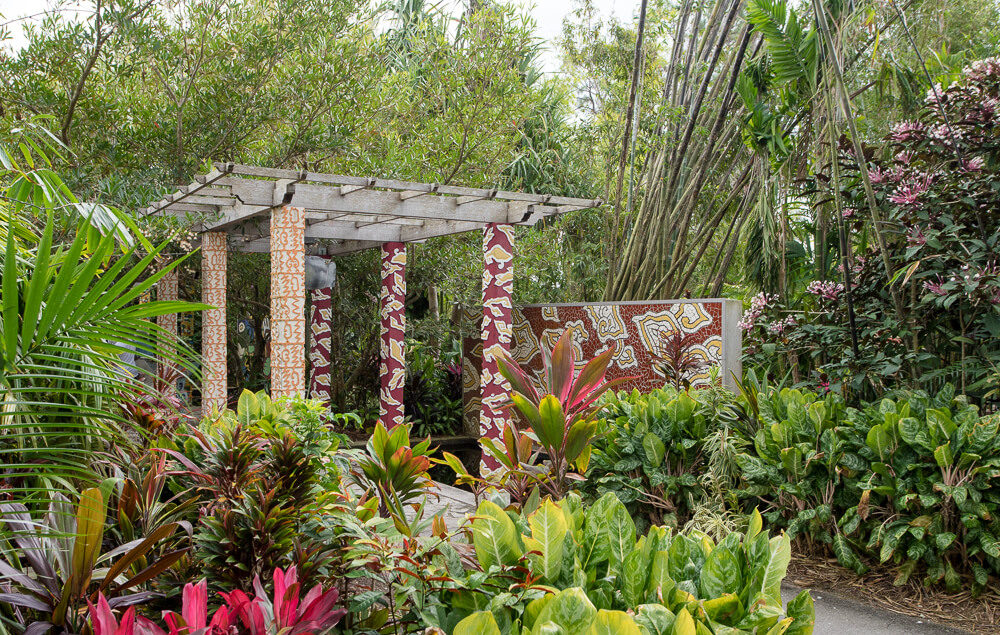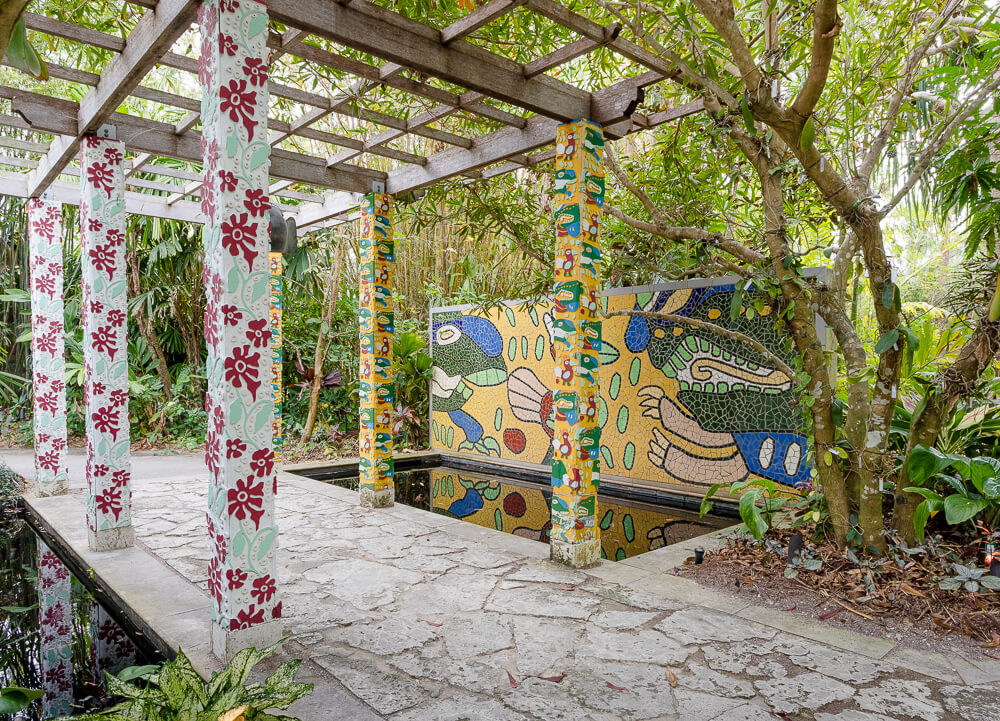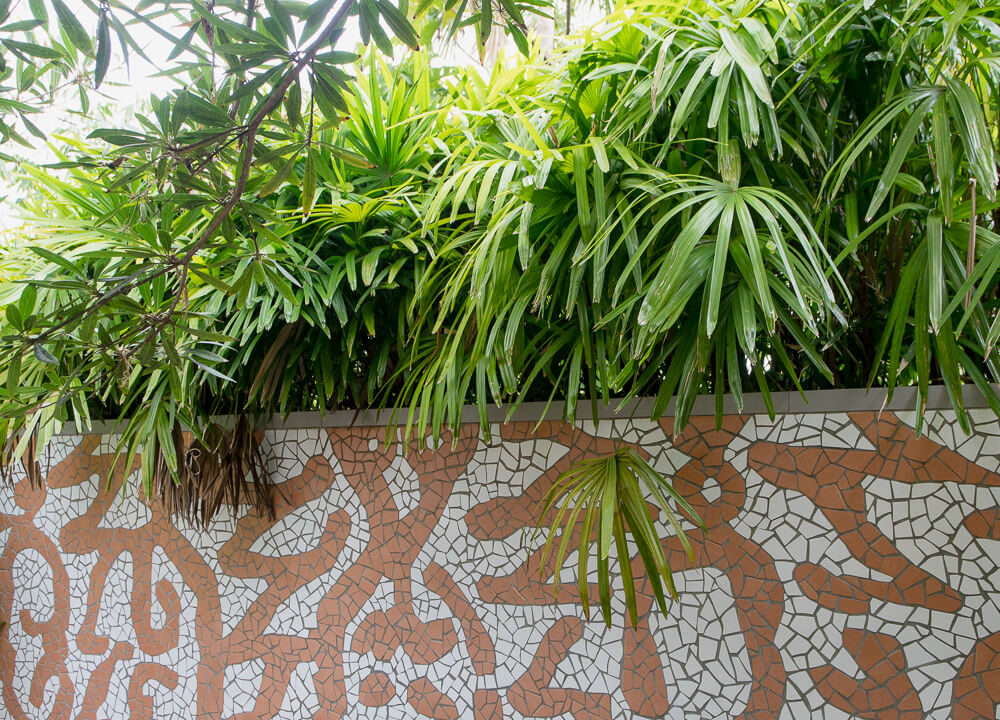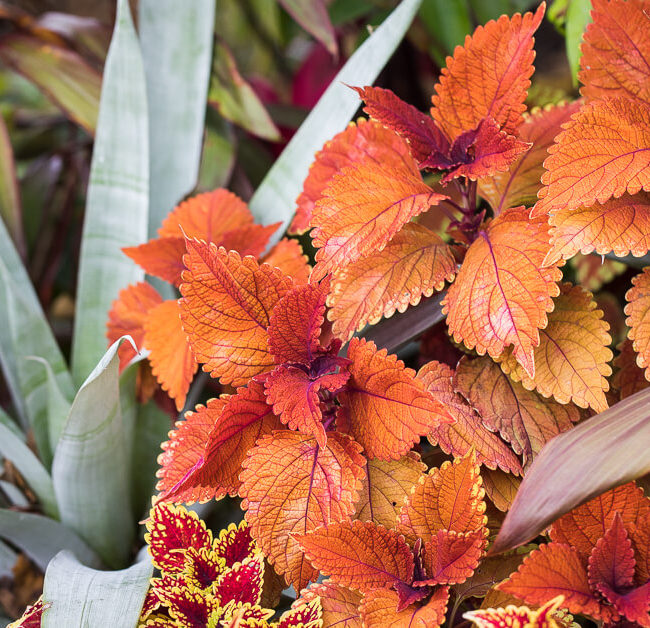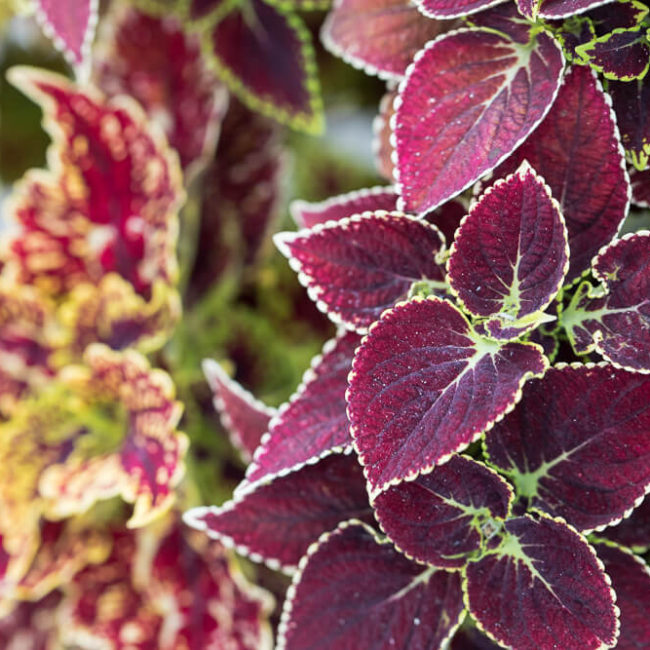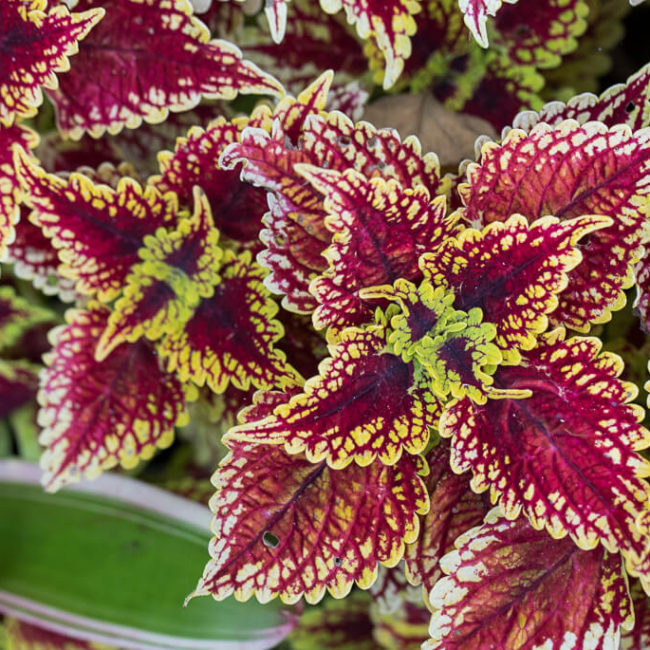Naples Botanical Garden Showcases Tropical Plants of the 26th Parallels
Gardens with Latitude. A catchy name but also the defining theme of the Naples Botanical Garden. Located on the 26th latitude north, the garden features plants that thrive between the two 26th parallels. This region includes some of the most diverse ecosystems on earth and is home to many unique plant communities. Themed gardens showcase the plants and culture of Brazil, Florida, the Caribbean, and Southeast Asia.
Like the city it resides in, and many of those found between the two 26th latitudes, water is a central theme at the Naples Botanical Garden. The designers use water to organize the space into distinct garden rooms. Crossing over a bridge transports you from one tropical paradise to the next. The diversity of gardens means that there is much to discover. If you move quickly, you’ll be able to see everything in a few hours. But if you’re like me, you’ll be able to spend many glorious hours exploring this tropical paradise.
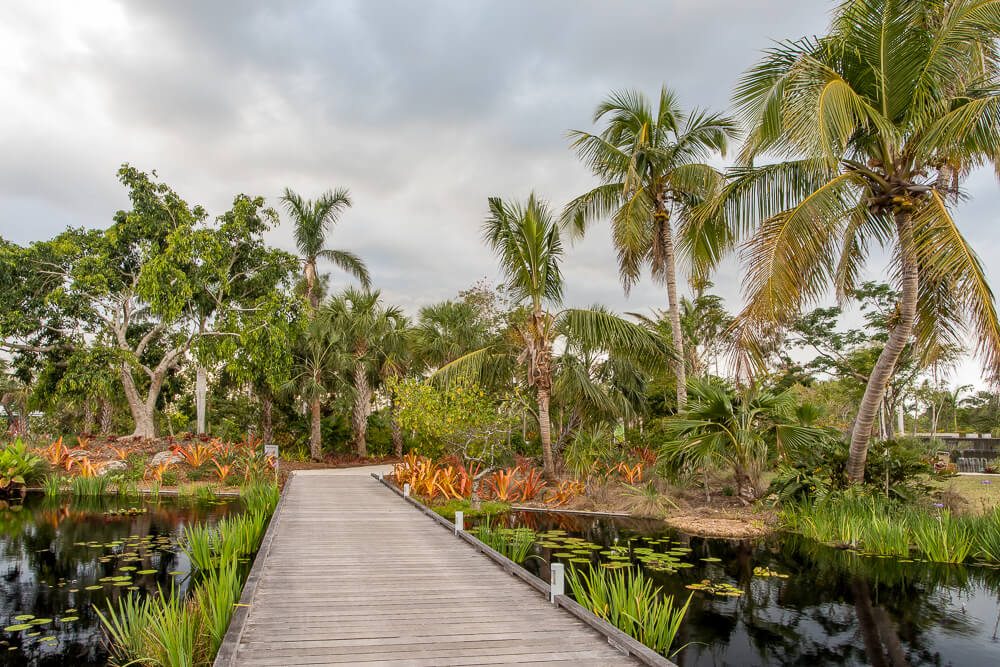
A wide boardwalk bisects the water garden and gives visitors an up-close view of irises, lotus, and water lilies.
Diverse Themed Gardens at Naples Botanical Garden
Marcia and L. Bates Lea Asian Garden
World-renowned garden designer, Made Wijaya, created a garden that transports visitors to the faraway places that he loved. The combination of exotic plants, water, and unique architectural features makes this one of the most interesting spaces within the garden—and also one of the most popular. While water is prominent throughout the botanical garden, I think its influence is most strongly felt in the Lea Asian Garden. Built upon a series of connected ponds, water connects the different themed garden but also separates them. Dense vegetation obscures your view and creates an element of mystery as you move from room to room.
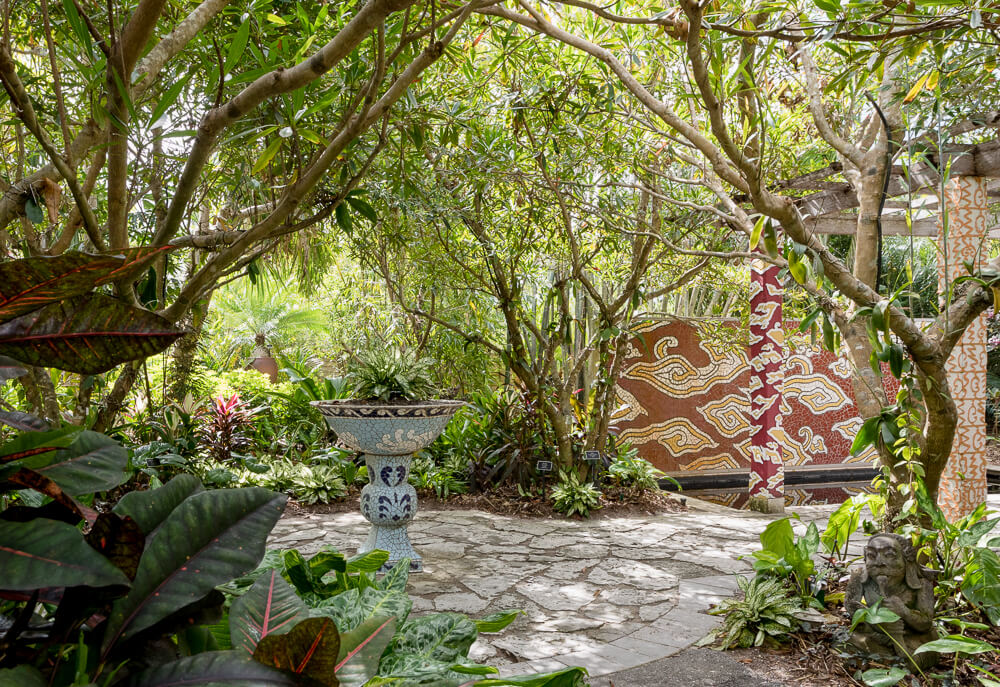
In the Lea Asian Garden, paths through dense vegetation lead you to small, intimate courtyards.
Statues, a mosaic-tiled courtyard, and even a Javanese ruin are nestled among tropical trees, palms, and bamboos. The largest structure, a Thai pavilion, is perched on the edge of a lotus pond. Densely planted beds surround two edges of the pavilion and shield visitors from the rest of the garden. Bali was especially close to Wijaya’s heart, and a main focal point of the garden is a Balinese shrine. A trail of stepping stones punctuate the black water and leads you to the small island shrine.
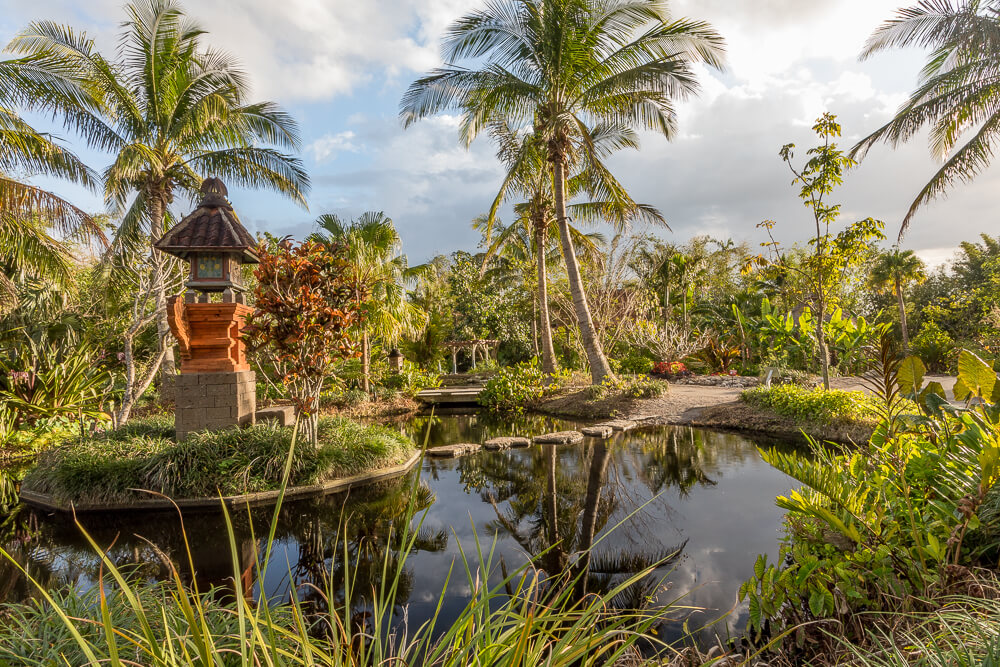
The Balinese shrine was built in Bali and transported to Florida, where it was reassembled and given a home in the garden.
The Preserve
In addition to showcasing plants from afar, the garden also pays homage to native Florida species and habitats. A 90-acre nature sanctuary has been preserved on the property, where acres of invasive species have been removed and native plants and animals thrive. You’re likely to see an osprey flying to and from their nest, gopher tortoises moseying through native grasses, and maybe an alligator basking in the sun.
The Naples Botanical Garden resides northwest of Everglades National Park and Big Cypress Nature Preserve. If you can’t make it to either place, the preserve gives you a taste of those unique ecosystems. A nature trail winds through the preserve, taking you from cypress swamps to pinelands to hardwood hammocks.
Florida Garden | The Enabling Garden
Designed to stimulate multiple senses, the Enabling Garden showcases garden techniques, tools, and equipment that people of all abilities can use. It’s a garden that welcomes exploration and play. Various programs are hosted in this garden to give others the opportunity to experience the pleasures that gardening provides.
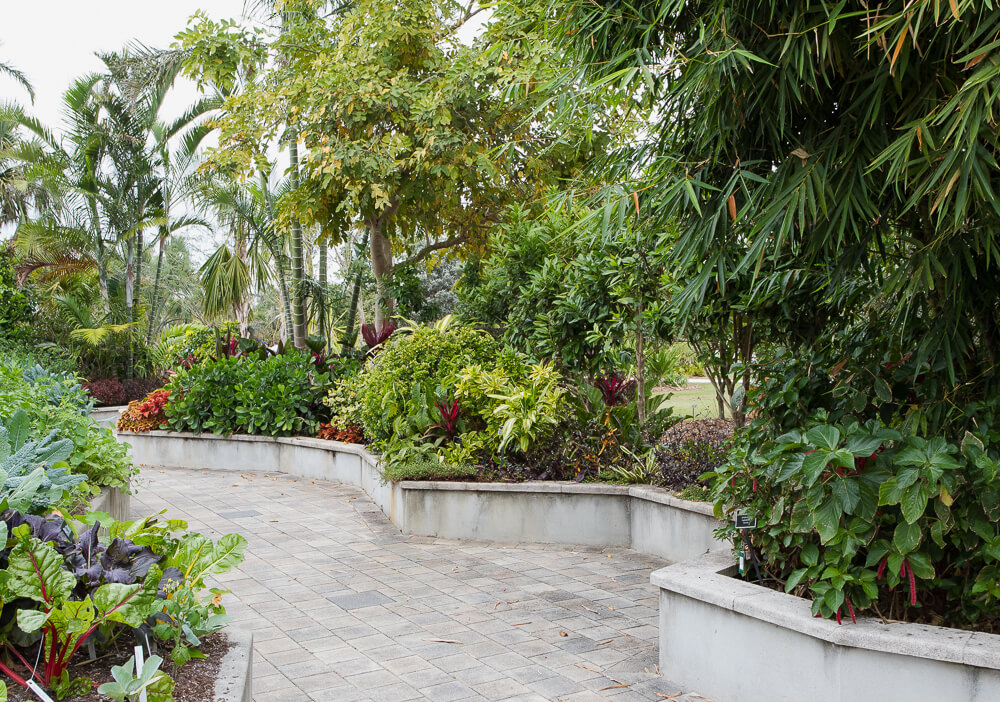
Raised beds are easier to tend for those with mobility challenges.
Here, I found raised beds overflowing with lush, colorful plants. The bold colors and contrasting textures create a vibrant tapestry. Plants in this garden thrive in Southwest Florida and serve as inspiration for visitors to use in their own gardens.
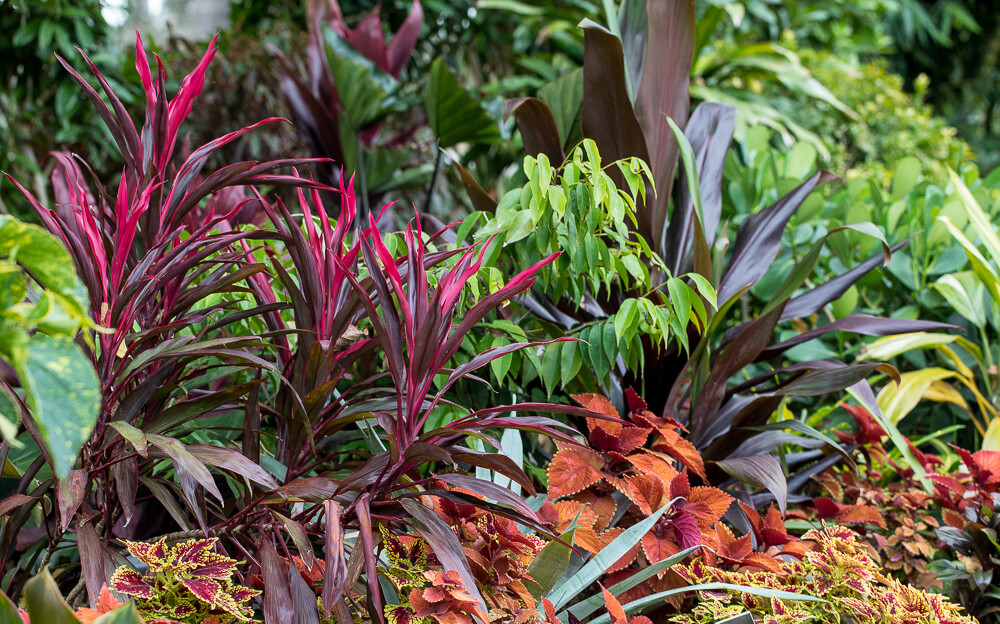
The Kathleen and Scott Kapnick Brazilian Garden
The garden showcases the rich diversity of flora found in Brazil’s seven distinct terrestrial habitats. You’ll find plants from the tropical rainforest, mangrove forest, tropical semi-deciduous forest, savanna, dry scrubland, grasslands, and the Pantanal wetlands. Designed by Raymond Jungles, the garden is a tribute to his long-time friend and mentor, the legendary Brazilian landscape architect Roberto Burle Marx.
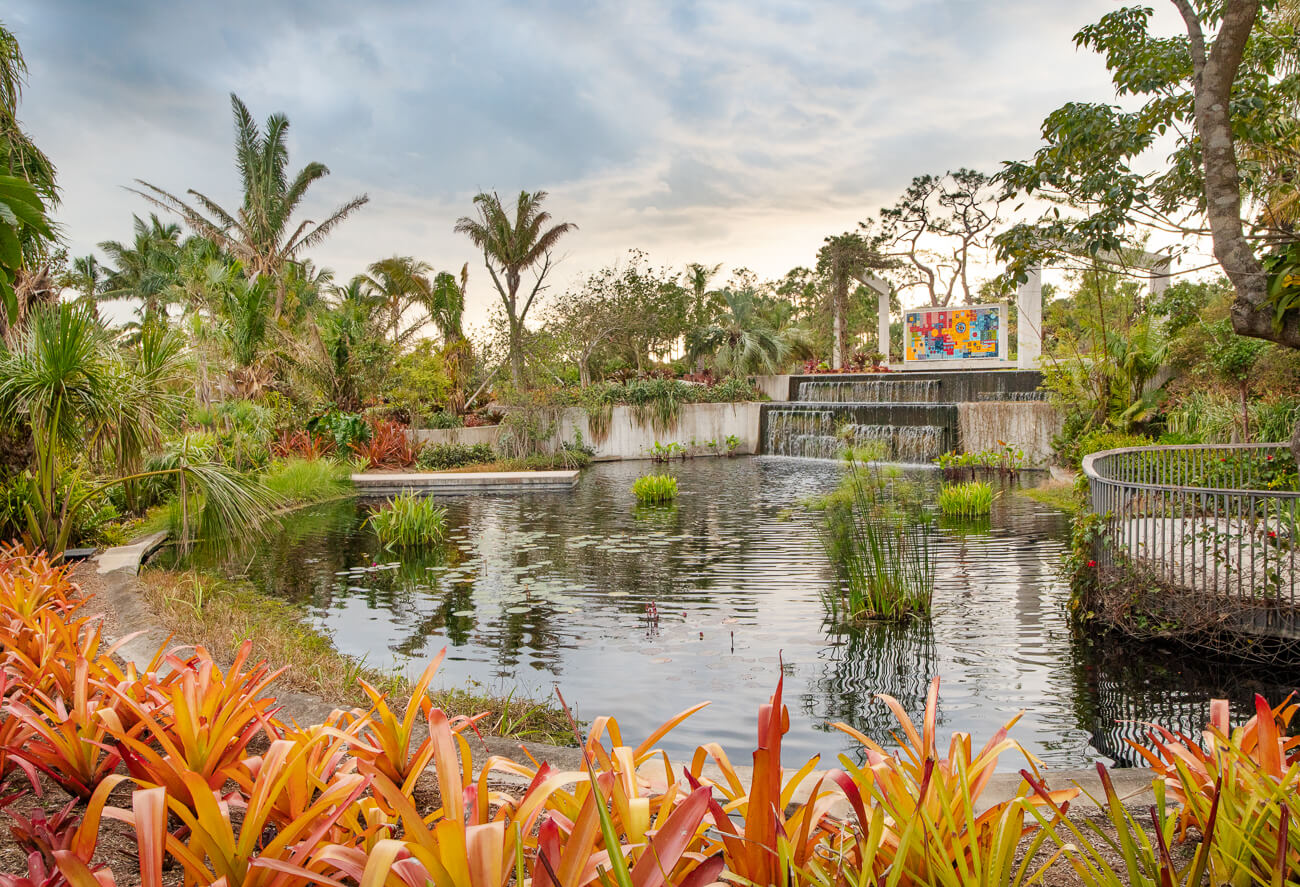
The orange Aechmea blanchetiana in the foreground mimics the colors found in the Marx tile mural.
Perched above a multi-tiered cascading waterfall is the focal point of the garden: a ceramic tile mural created by Marx. It’s the only public Marx mural located in the U.S., and it was generously donated by Jungles. The vibrant mural sets the palette for the garden. The colors of the mural are echoed in the plants found throughout the garden. Pops of yellow and red bromeliads contrast the lush green aroids and palms.
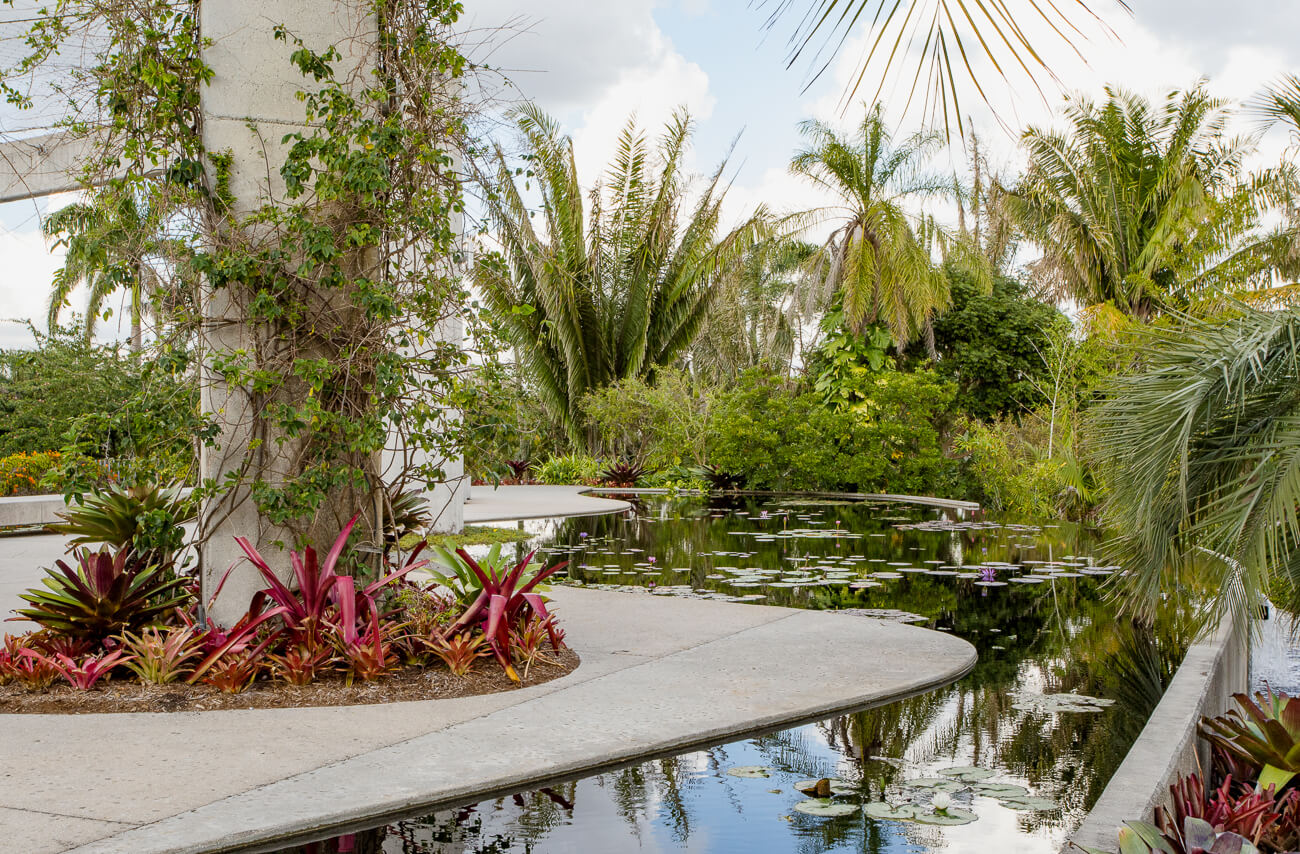
A large contemporary plaza gives visitors close access to the water garden that is the beginning of a the multi-tiered cascading waterfall.
A Garden of Excellence
Visiting the garden, you wouldn’t know that it has only been open to the public for 9 years. The 170-acre garden is jam-packed with mature plants and well-established garden beds. In Florida’s subtropical climate, the gardens have flourished.
In 2017, the Naples Botanical Garden won the American Public Gardens Association’s prestigious award for Garden Excellence. It’s the youngest garden to have won this award and it is a testament to the garden’s strong horticultural design. The dream team behind the garden’s bold contemporary design, includes landscape architects Ted Flato, Made Wijaya, Raymond Jungles, Herb Schaal, Robert Truskowski, and Ellin Goetz. This inspiring garden was made possible by a dedicated team of staff, volunteers, as well as through the support of generous donors. In a relatively short time frame, the team at Naples Botanical Garden have created paradise on earth.

